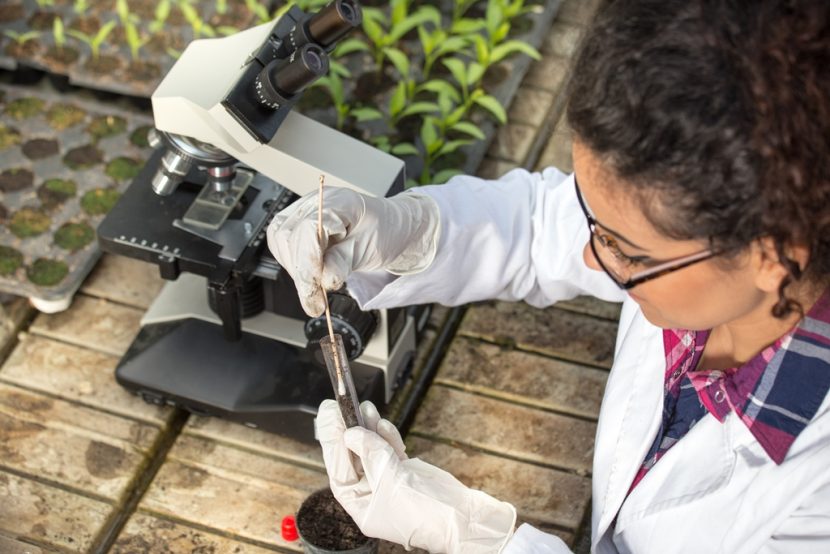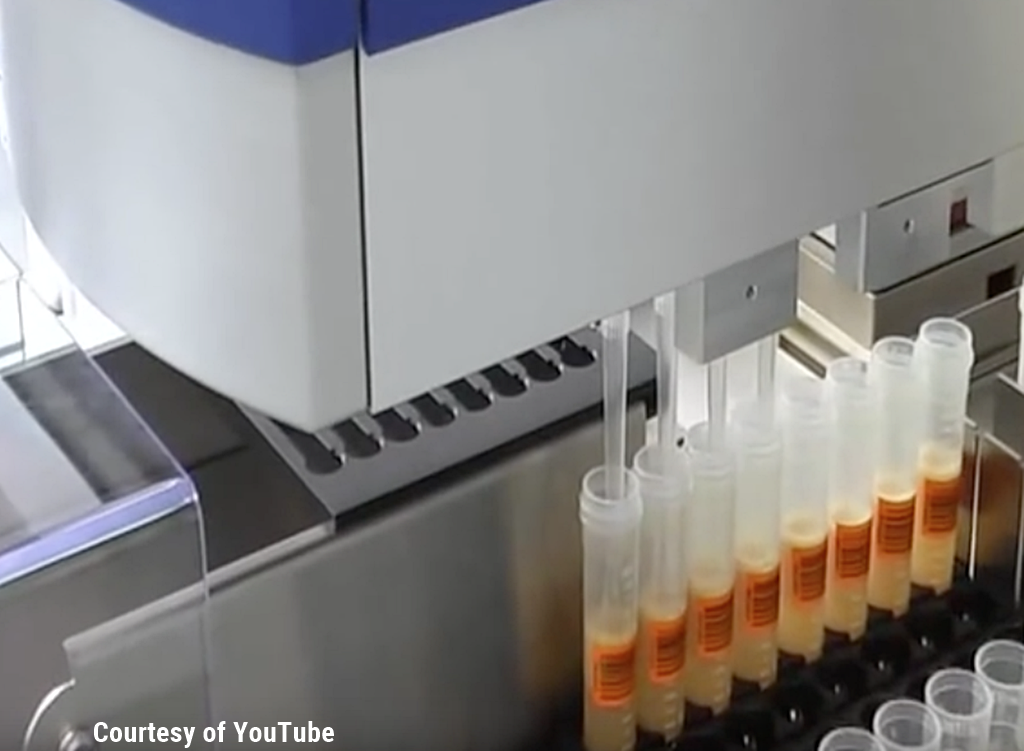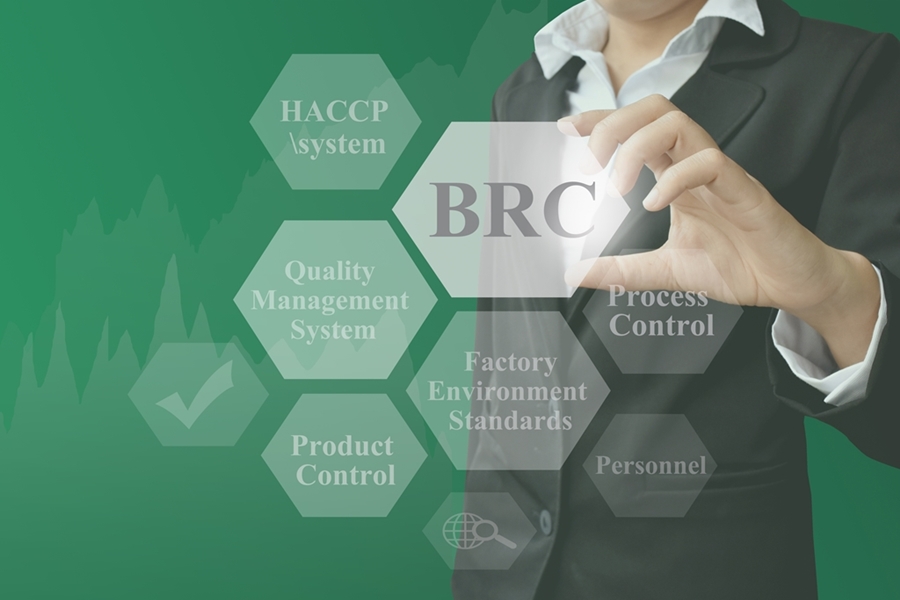Pathogen Detection From Farm-to-Fork “A Myth” Spurring Need for Innovation
By Suzanne Osborne
The Food and Drug Administration’s (FDA) Food Safety Modernization Act (FSMA) holds the promise of food safety from “farm-to-fork” using science-based standards to detect and respond to food contamination at each step along the supply chain. Yet, when we look at pathogen detection methods as a whole, it becomes clear that “farm-to-fork” surveillance is a myth.
Pathogens are traditionally identified in labs by growing samples on selective media. This slow approach is increasingly unrealistic for today’s food production systems, and technology and scientific progress have led to the development of nucleic acid-, biosensor-, and immunoassay-based methods of pathogen detection.
Each of these methods has sensitivity, specificity, or ease-of-use advantages. But most of these modern detection strategies still require about 24 hours for results, as well as some degree of technical expertise, costly equipment, and sample enrichment prior to testing. In short, the majority of detection methods are not feasible for use by farmers or consumers. How can we call it food safety from “farm-to-fork” when the “farm” and the “fork” components are missing? Let’s look a little closer at this issue.
When we look at pathogen detection methods…it becomes clear that “farm-to-fork” surveillance is a myth.
Challenges To On-Farm Pathogen Detection Methods
There are very few FDA-approved diagnostic tools that are truly compatible with on-farm testing. For example, under FSMA’s Produce Safety Rules there are 16 scientifically-validated pathogen detection methods for testing agricultural water. Only two are even remotely compatible with on-farm use and even they require incubators and a way to detect fluorescent light.
As a result, farmers must send samples to testing laboratories. This creates a significant delay between sampling and results. It limits a farmer’s capacity for real-time decision-making.
Researchers are diligently working to solve this problem. Kiwamu Tanaka, Assistant Professor in the Department of Plant Pathology at Washington State University, recently developed a rapid, portable, real-time nucleic acid-based detection system for soil pathogens. Although the prototype Dr. Tanaka’s team developed is geared towards identifying bacteria that can damage plants, it could easily be adapted to detect human pathogens in soil. The technology is unique in that it uses magnets to isolate bacterial DNA from soil – eliminating the need for technically challenging and time-consuming sample enrichment prior to testing. Their prototype was used for on-farm diagnosis. Other bio-sensor technologies, including ProteoSense RapidScan which is due to be launched in 2019, hold the promise of on-farm pathogen detection with minimal sample preparation for use by non-technical personnel.
Consumers Are Excluded from Pathogen Detection Completely
Consumers are increasingly interested in being their own decision-makers when it comes to food. Yet, their pathogen-detection arsenal is limited to “best-before” dates and the look and smell of the food in question. Intelligent packaging may soon inform consumers about product storage conditions. This includes humidity, temperature, and storage time. But these read-outs do not directly detect pathogens. A plastic patch, called Sentinel Wrap, might change this. Recently developed at McMaster University in Hamilton, Canada, and still in the early stages of development, this flexible polymer film contains pathogen-specific biosensors. It is easily attached to a product, package, or food preparation surface. Sentinel Wrap has no need for product processing, is stable for two weeks, and works on liquid or solid food. The polymer produces UV light in the presence of E. coli. With a simple cell phone attachment to view UV light, consumers could easily detect whether their food is contaminated with bacteria.
It is clear that a safe “farm-to-fork” food supply chain needs pathogen detection at each stage – from farmers, to processors, to transporters and, finally, to consumers. Though technologies for pathogen detection have made drastic leaps forward, available methodologies continue to exclude farmers and consumers from real-time decision making. Until we include these key players, “farm-to-fork” pathogen surveillance remains incomplete.
About the Author
Dr. Suzanne Osborne’s expertise is in the field of host-pathogen interactions and foodborne bacteria. She obtained her doctoral degree at McMaster University and worked as a Research Fellow at the Hospital for Sick Children (Toronto). She has received numerous awards for her research. Suzanne currently does freelance science writing and grant writing.

-
 FeaturedRisk management
The Cost of a Breach: What a Cyberattack Could Mean for Food Safety Recalls
FeaturedRisk management
The Cost of a Breach: What a Cyberattack Could Mean for Food Safety Recalls
-
 FeaturedRisk management
Securing the Food Chain: How ISO/IEC 27001 Strengthens Cybersecurity
FeaturedRisk management
Securing the Food Chain: How ISO/IEC 27001 Strengthens Cybersecurity
-
 FeaturedRisk management
Revolutionizing Food Safety Training: Breaking Out of the “Check-the-Box” Mentality
FeaturedRisk management
Revolutionizing Food Safety Training: Breaking Out of the “Check-the-Box” Mentality
-
 GFSI Standards
GFSI 2025: Building Trust, Tech-Forward Solutions, and Global Unity in Food Safety
GFSI Standards
GFSI 2025: Building Trust, Tech-Forward Solutions, and Global Unity in Food Safety
-
 FeaturedFood Safety
Integrated Pest Management: Strategies to Protect Your Brand’s Reputation
FeaturedFood Safety
Integrated Pest Management: Strategies to Protect Your Brand’s Reputation
-
 FeaturedFood Safety Culture & Training
No Open Door Policy: Challenges That Impact Pest Control in Food Processing Plants
FeaturedFood Safety Culture & Training
No Open Door Policy: Challenges That Impact Pest Control in Food Processing Plants




